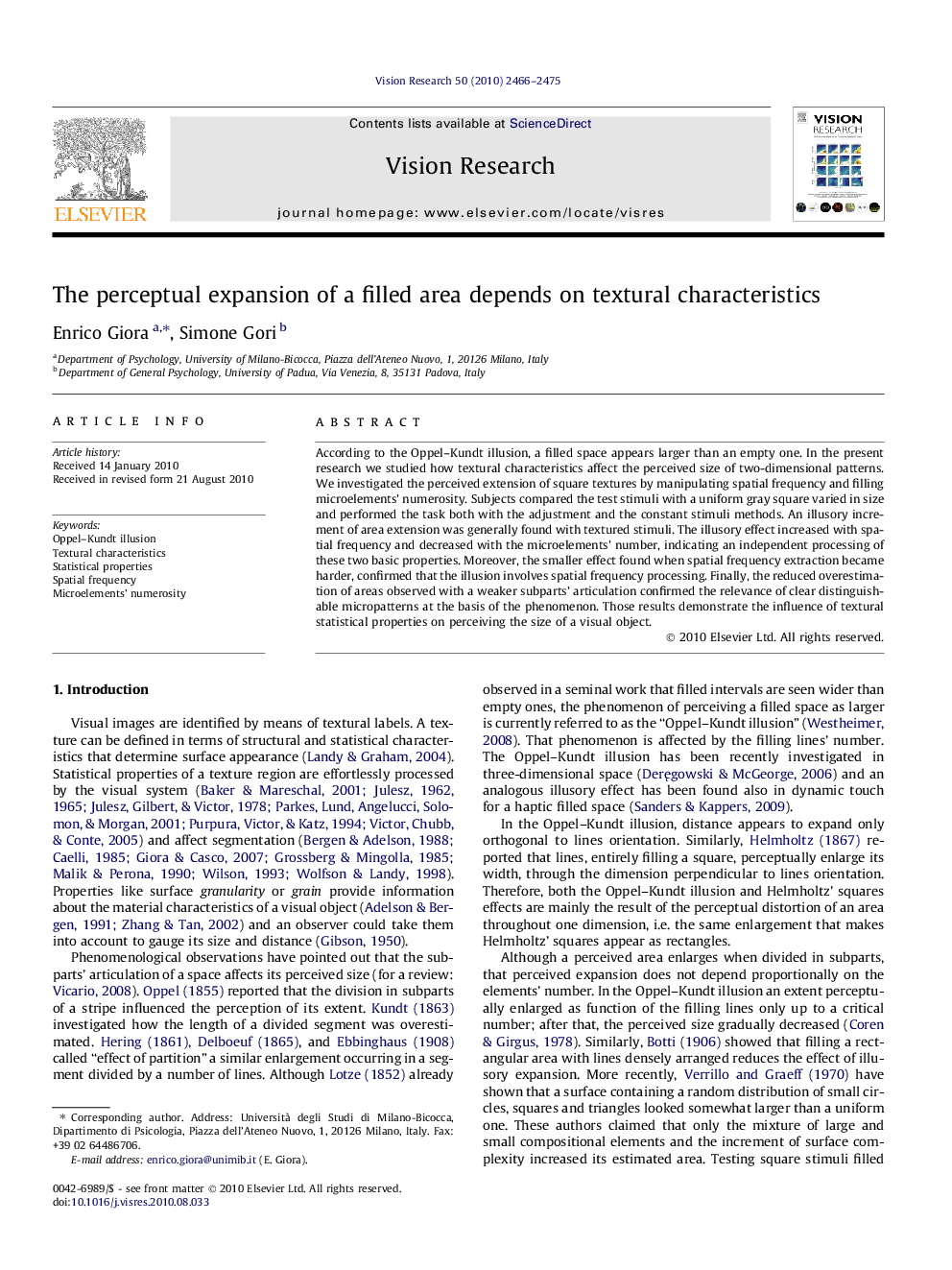| Article ID | Journal | Published Year | Pages | File Type |
|---|---|---|---|---|
| 6203813 | Vision Research | 2010 | 10 Pages |
According to the Oppel-Kundt illusion, a filled space appears larger than an empty one. In the present research we studied how textural characteristics affect the perceived size of two-dimensional patterns. We investigated the perceived extension of square textures by manipulating spatial frequency and filling microelements' numerosity. Subjects compared the test stimuli with a uniform gray square varied in size and performed the task both with the adjustment and the constant stimuli methods. An illusory increment of area extension was generally found with textured stimuli. The illusory effect increased with spatial frequency and decreased with the microelements' number, indicating an independent processing of these two basic properties. Moreover, the smaller effect found when spatial frequency extraction became harder, confirmed that the illusion involves spatial frequency processing. Finally, the reduced overestimation of areas observed with a weaker subparts' articulation confirmed the relevance of clear distinguishable micropatterns at the basis of the phenomenon. Those results demonstrate the influence of textural statistical properties on perceiving the size of a visual object.
Research highlights⺠An area filled by subparts appears lager than a uniform area of the same size. ⺠The illusory effect of the filled area increases in function of spatial frequency. ⺠The illusory effect of the filled area decreases with microelements' number. ⺠The illusory effect of the filled area increases with clearly distinguishable subparts. ⺠Textural statistical properties influence the size of a visual object.
